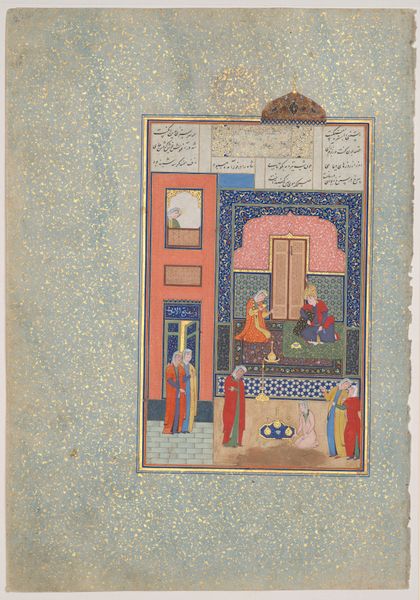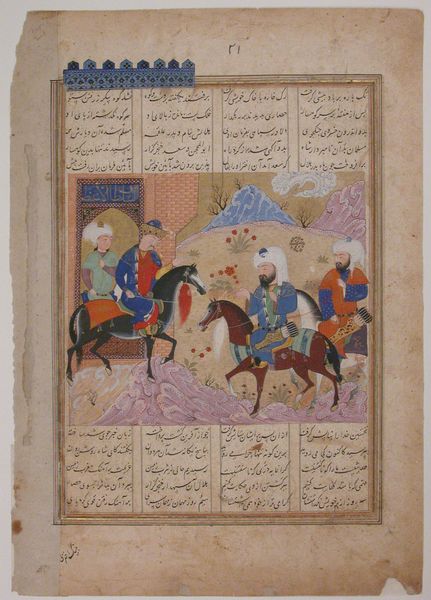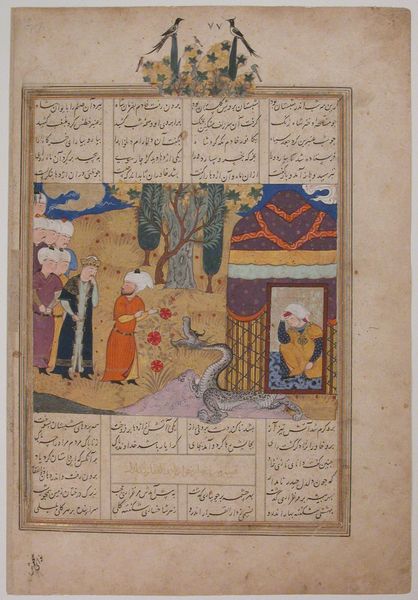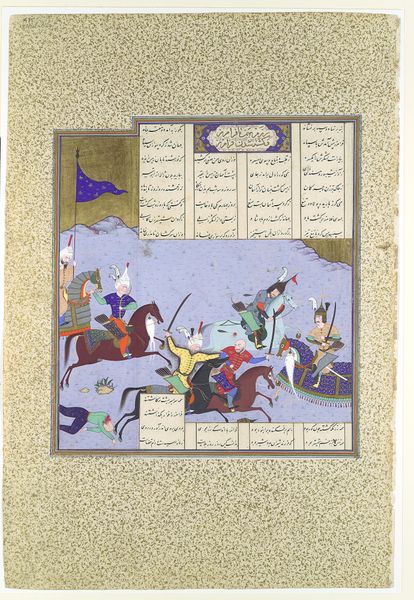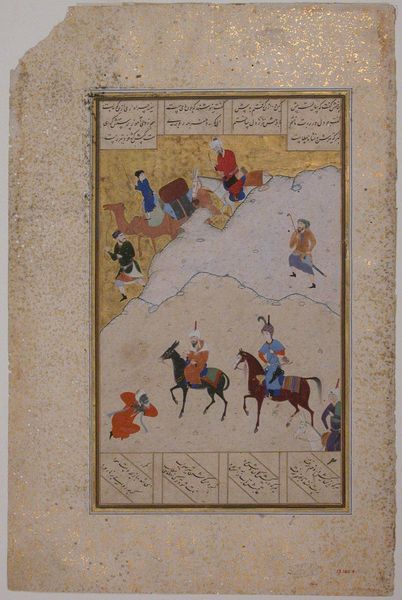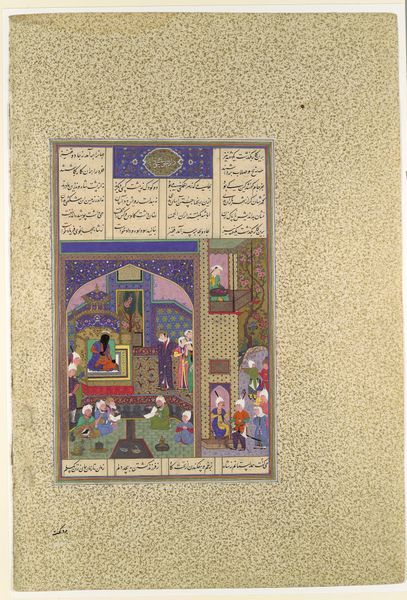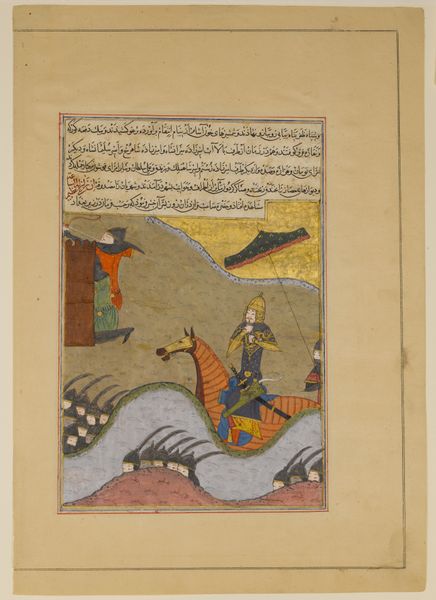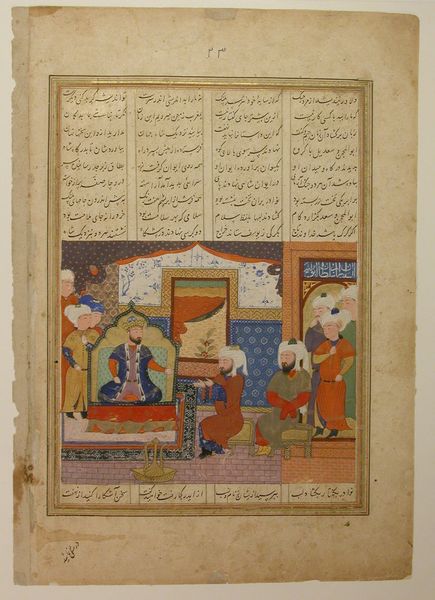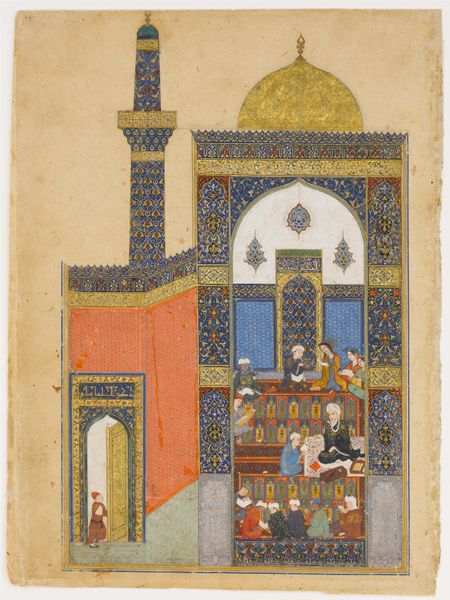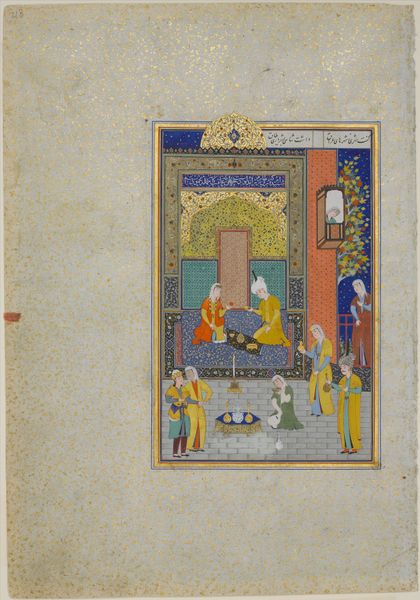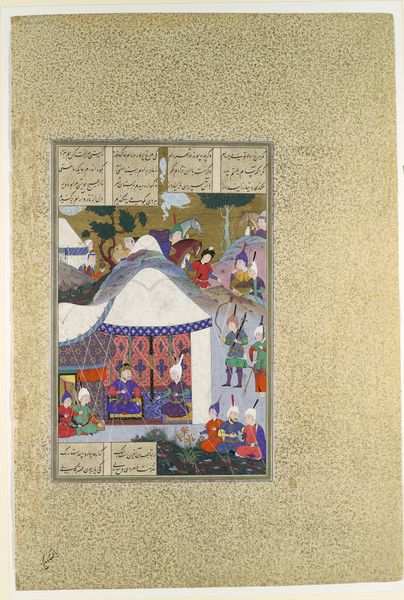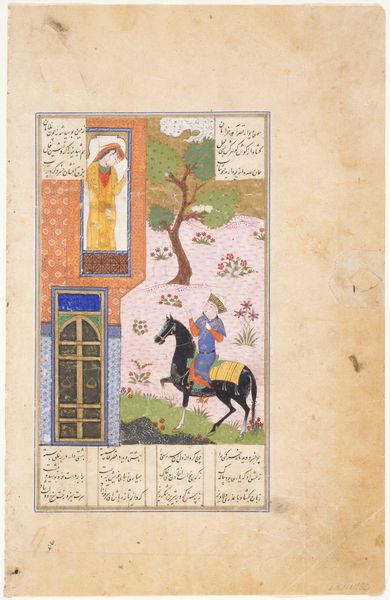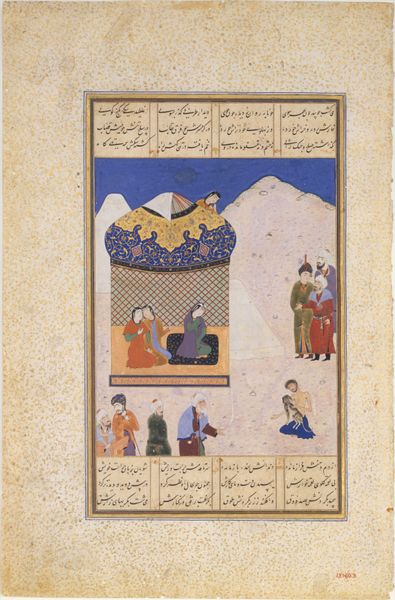
"Khusrau Arriving at Shirin's Palace", Folio from a Khamsa (Quintet) of Amir Khusrau Dihlavi 1495 - 1550
0:00
0:00
painting, watercolor
#
water colours
#
painting
#
landscape
#
watercolor
#
horse
#
men
#
islamic-art
#
miniature
Dimensions: Painting: H. 8 1/2 in. (21.6 cm) W. 5 1/8 in. (13 cm) Page: H. 12 in. (30.5 cm) W. 7 7/8 in. (20 cm) Mat: H. 19 1/4 in. (48.9 cm) W.14 1/4 in. (36.2 cm)
Copyright: Public Domain
This exquisite painting from Amir Khusrau Dihlavi's "Khamsa," presents Khusrau's arrival at Shirin's palace, laden with symbolic weight. The window, prominently displaying Shirin and her attendant, isn't merely architectural; it's a motif of observation, a stage for emotional unveiling. The act of looking—of being seen—holds profound significance. Consider how this motif reverberates through artistic history. From Renaissance Annunciations, where divine messengers appear through windows, to later works exploring voyeurism and social distance, the window frames narratives of revelation and separation. The figures peering out evoke not just curiosity but a deep-seated human desire for connection and understanding. The collective memory of such images stirs subconscious associations within us, engaging our emotions on a visceral level. This cyclical progression highlights how symbols resurface, evolve, and take on new meanings, connecting us to the past in profound ways.
Comments
No comments
Be the first to comment and join the conversation on the ultimate creative platform.

